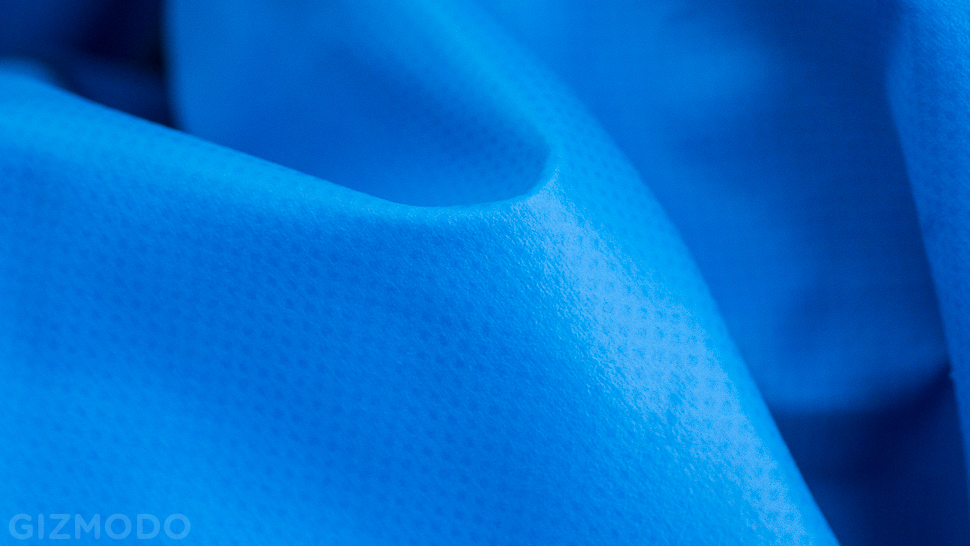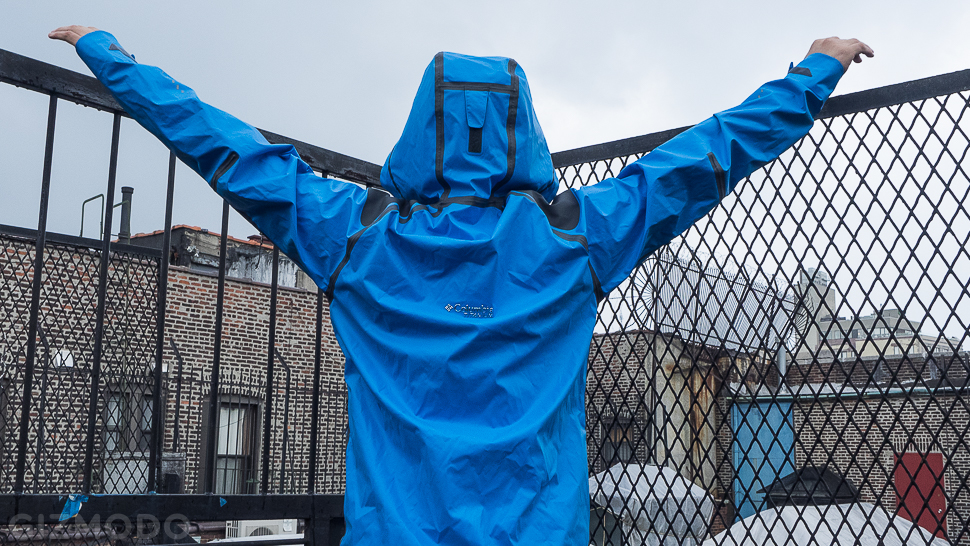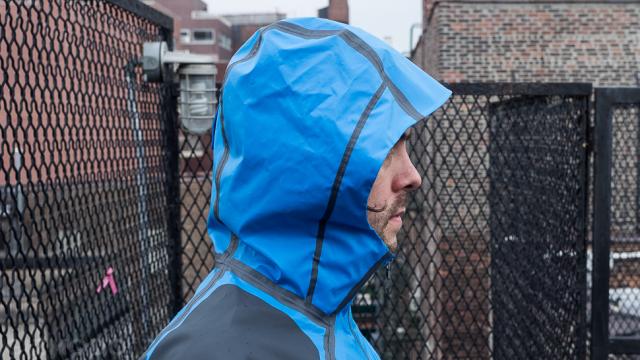Columbia Sportswear has spent the last few years designing a new kind of waterproof clothing technology called OutDry Extreme. It’s a nifty reversal of waterproof gear design that promises to deliver unheard of dryness and comfort. But will it work or is it all marketing?
Good waterproof gear is indispensable in the outdoors. It’s also really hard to make, especially when you’re trying to design wearable waterproof stuff like rain jackets. As Wes’ giant explainer points out, there’s a core tension when it comes to rain gear: You’ve got to keep heavy rainfall out while also allowing water vapour to escape from within, so that your body doesn’t become a clammy, uncomfortable, hypothermic mess.
Take for example, a huge rubber fisherman’s rain coat that’s completely impervious to water in both directions. No water gets in, no water gets out. Sure you don’t get wet from the rain or from ocean spray, but you’re still soaked because the water vapour your body is always exhausting has nowhere to go.

Traditional waterproof gear, like stuff that wears a Gore-Tex label uses a three-layered construction to get both jobs done: There’s a waterproof/breathable membrane sandwiched between two pieces of fabric. The outer fabric layer is treated with a durable water repellent (more on DWR anon), and the inner layer is a liner that gets the water off your skin and helps move it to the membrane, keeping you nice and dry. It works pretty well, and has for the 45 years since the technology was first introduced.
Columbia’s OutDry Extreme tech is built differently. In this case, the exterior is covered in a water-tight membrane that makes the jackets look and feel more like a rubber drybag than the usual fabric exteriors of traditional WP/B gear. Columbia’s external membrane repels the big water droplets from rainfall (or yes, ocean spray), but it’s not entirely sealed off; the membrane has millions of tiny perforations that let water vapour evaporate out of the jacket.
Below the membrane is a liner made of a nylon fabric that wicks water away from your skin. If the whole system works as advertised, an OutDry Extreme jacket will keep you dry, cool, and comfortable.

How does OutDry Extreme compare to everything else out there on waterproofness and breathability?
For waterproofness, it’s easier to pin down numbers. At bare minimum, a “waterproof” jacket should be able to withstand 10,000mm of water pressure before it soaks through. According to Columbia, OutDry Extreme can withstand 20,000mm of pressure without any problem. So it’s waterproof. By comparison, Wes’s favourite WP/B fabric, Polartec’s Neoshell, can withstand 10,000mm and Gore-Tex starts at 28,000mm.
Now let’s return to the durable water repellent coating I referred to above. Here, Columbia thinks it’s solved one of the big problems with Neoshell and Gore-Tex and the like. These technologies rely on a fabric outer layer treated with DWR. This coating tends to degrade with wear and abrasions to the material, which means after you’ve taken your gear for a few romps in the woods, it’s going to start soaking up water in its outer layer, reducing its breathability. You’ll have to retreat your coat from time to time. OutDry Extreme meanwhile has no DWR, and thus, isn’t subject to the degradation. The outer membrane is tough and doesn’t degrade. It’s just waterproof by nature of its design.

As for breathability, amazingly, there’s no widely accepted methodology for testing this key attribute. Columbia’s Director of Innovation declined to provide any information I could use to objectively compare OutDry Extreme’s breathability with the competitors. He’s confident in the tech — how could he not be — and hopes that one day he’ll be able to prove his company’s claims:
With OutDry Extreme we have a simple explanation for how the materials breathe. [It’s] “air permeability” and moisture vapour transfer made possible by “micro-porous” membranes. In the case of OutDry Extreme [Breathability] at the highest available levels in the industry and we are currently working on new, 3rd party-validated tests that prove this claim.
So where does that leave us? Well, for all their shortcomings, three-layer raingear is proven by years and years of experience, while OutDry Extreme is still new. The design certainly rings sound, but experience is the missing proof.
I’ve currently got one of Columbia’s new OutDry jackets in my possession, but I haven’t put it through what you could consider a real test — it hasn’t rained hard yet! I will say that even on muggy days it stays pretty cool and dry inside, which bodes well for the unanswered breathability question. There are also a number of other facets that determine the quality of gear. For example, Columbia’s gone pretty hardcore with exterior seams that are completely sealed. The company also has its own proprietary zippers that are either aesthetic differentiators or smooth zipping innovations, depending on how you see them
Additionally, remember that there are other new technologies out there vying for your attention. For example, the new NWAlpine Eyebright jacket, which Wes is currently testing. We’ll keep you posted as we learn more at about these technologies — we’d hate for you to run out shopping right away. Dry is one thing. High and dry is quite another.
Photos by Michael Hession
